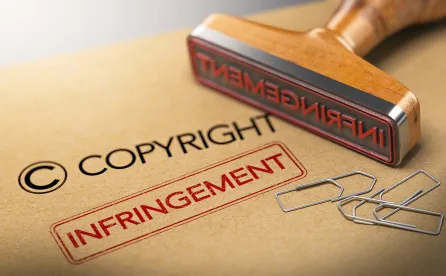Canadian conservationist Paul Nicklen posted a video he took of an emaciated polar bear in the Canadian Arctic on his Instagram account on December 5, 2017. In the text accompanying the “haunt[ing]” and “heartbreaking” video, Nicklen asked his followers to consider the effects of climate change. Sinclair Broadcast Group, Inc., like many other news outlets, covered Nicklen’s viral content. In an online article, Sinclair “embedded” Nicklen’s video through HTML code provided by Instagram.
Nicklen, as author and registered copyright owner of the image, sued Sinclair for copyright infringement in the United States District Court for the Southern District of New York. Sinclair moved to dismiss the action, “arguing that embedding a video does not ‘display’ the video within the meaning of the Copyright Act” and seeking protection under the Ninth Circuit’s so-called Server Test. Judge Jed S. Rakoff denied Sinclair’s motion, holding that “[t]he server rule is contrary to the text and legislative history of the Copyright Act.”
The Ninth Circuit adopted the server test in Perfect 10, Inc. v. Amazon.com, Inc., 508 F.3d 1146 (9th Cir. 2007), holding that whether a website publisher is directly liable for copyright infringement turns on whether the image is hosted on the publisher’s own server or is embedded or linked from a third-party server. In that case, Perfect 10, a subscription website for images of nude models, alleged that Google and Amazon infringed its copyrights because (1) Google’s search engine results included reduced-sized, lower resolution “thumbnail” versions of its original images, and (2) Google’s business agreement with Amazon permitted Google’s search engine to send search results, including Perfect 10’s original images, to Amazon’s customers. The Ninth Circuit found that (1) the thumbnails were infringing based on the fact that they were stored on Google’s server, and (2) the full size original images, which were stored on third-party servers and accessed by “in-line linking” (which works like embedding) were not infringements.
In his July 30, 2021 decision, Judge Rakoff refused to adopt the server test for two primary reasons. First, he held that “[t]he Act defines to display as ‘to show a copy of’ a work, 17 U.S.C. § 101, not ‘to make and then show a copy of the copyrighted work.’” Second, he distinguished Perfect 10, holding that “this case does not involve a search engine, and Nicklen alleges that no user intervention was required to display the Video’s individual images nonsequentially. An individual still image from the Video awaits Sinclair readers whether they click the image to play the video or not. Thus, Perfect 10’s test is a poor fit for this case, and the Court declines to adopt it.”
Judge Rakoff is not the first S.D.N.Y. judge to rebuff the server test. In 2018, Judge Katherine B. Forrest rejected the assertion that “Perfect 10 is part of an ’unbroken line of authority” and observing that “[o]utside of the Ninth Circuit . . . the Server Test has not been widely adopted.” Goldman v. Breitbart News Network, LLC, 302 F. Supp. 3d 585, 591 (S.D.N.Y. 2018).
That said, the issue of whether an embedded image can give rise to a claim of copyright infringement is highly unsettled law even within the Second Circuit. For example, in Sinclair v. Ziff Davis, LLC, a professional photograph sued Mashable, Inc. and its parent company after she shared a copyrighted photograph to her Instagram account which Mashable subsequently embedded in an article. No. 18-CV-790 (KMW), 2020 WL 3450136 (S.D.N.Y. June 24, 2020). Judge Kimba Wood, after finding that the photographer granted Instagram a valid license to display the image and Instagram validly exercised its right, included a footnote acknowledging that the Court “need not reach the question, addressed in Goldman but unsettled in this Circuit, of whether embedding an image constitutes ’display ’that is capable of infringing a copyright in the image.” In Walsh v. Townsquare Media, Inc., Judge Vernon S. Broderick included a similar footnote:
I note that the Second Circuit has not addressed whether and when embedding an image that is hosted elsewhere constitutes ‘display’ within the meaning of the Copyright Act, and only a handful of district courts across the country have discussed the question.
464 F. Supp. 3d 570 (S.D.N.Y. 2020).[1]
The case is Nicklen v. Sinclair Broadcast Group, Inc., et al., No. 20-cv-10300 (JSR), 2021 WL 3239510 (S.D.N.Y. July 30, 2021).
[1]See also McGucken v. Newsweek LLC, 464 F. Supp. 3d 594, 600 (S.D.N.Y. 2020), reconsideration denied, No. 19 CIV. 9617 (KPF), 2020 WL 6135733 (S.D.N.Y. Oct. 19, 2020) (Judge Katherine Polk Failia found “Judge Wood’s decision to be well-reasoned and sees little cause to disagree with that court’s reading of Instagram’s Terms of Use and other policies.”); Boesen v. United Sports Publications, Ltd., No. 20CV1552ARRSIL, 2020 WL 6393010, (E.D.N.Y. Nov. 2, 2020), reconsideration denied, No. 20CV1552ARRSIL, 2020 WL 7625222 (E.D.N.Y. Dec. 22, 2020) (Judge Allyne R. Ross found that while “embedding social media posts that incidentally use copyrighted images in reporting on the posts themselves transforms the original works,” supports a finding of fair use, it “does not give publishers free reign to copy and paste copyrighted images at whim whenever they appear on Instagram or Facebook. Rather, it draws a line that balances photographers’ interest in protecting their copyrights with reporters’ interest in covering social media events.”).



 />i
/>i

